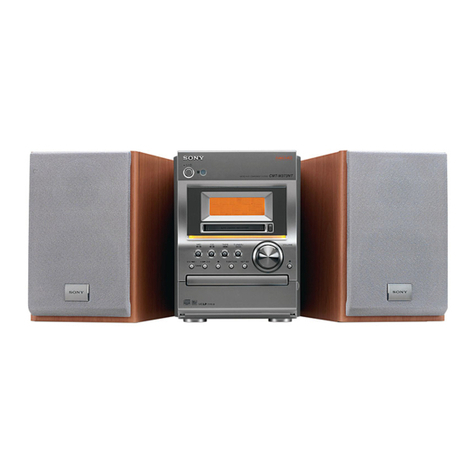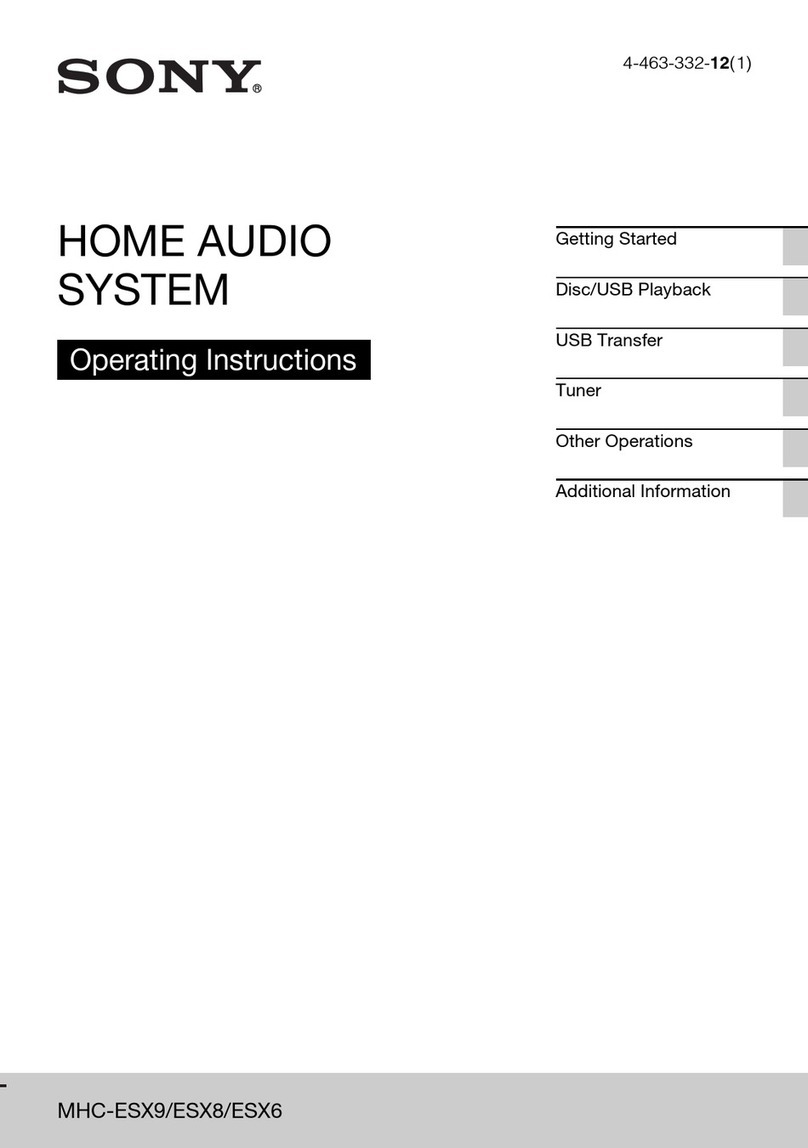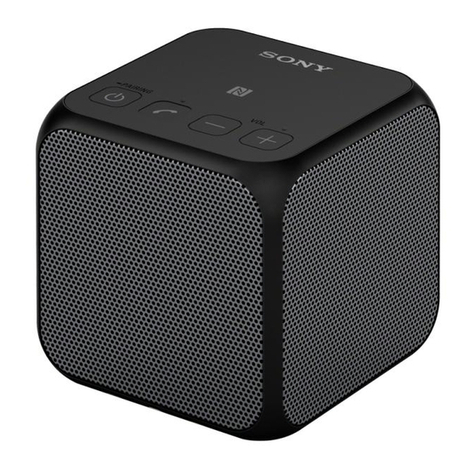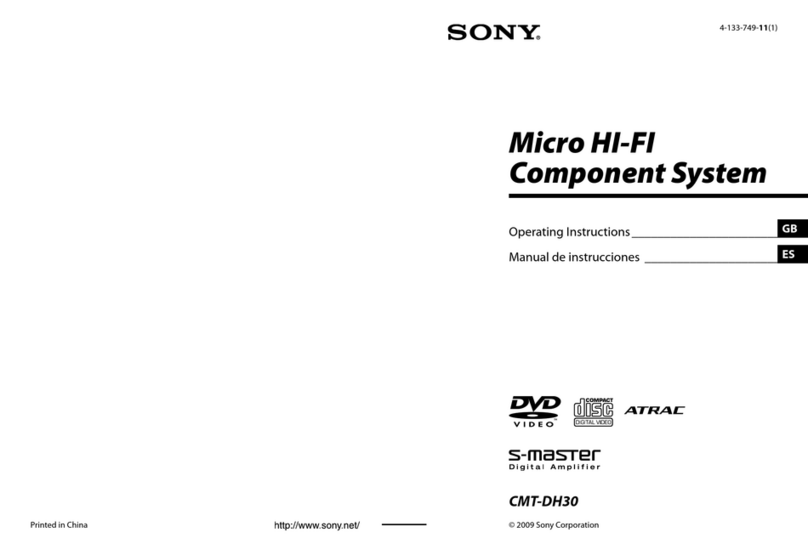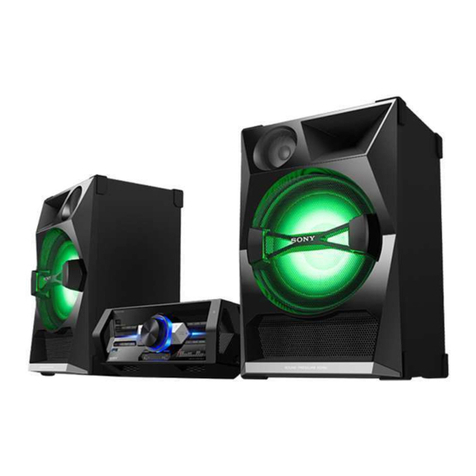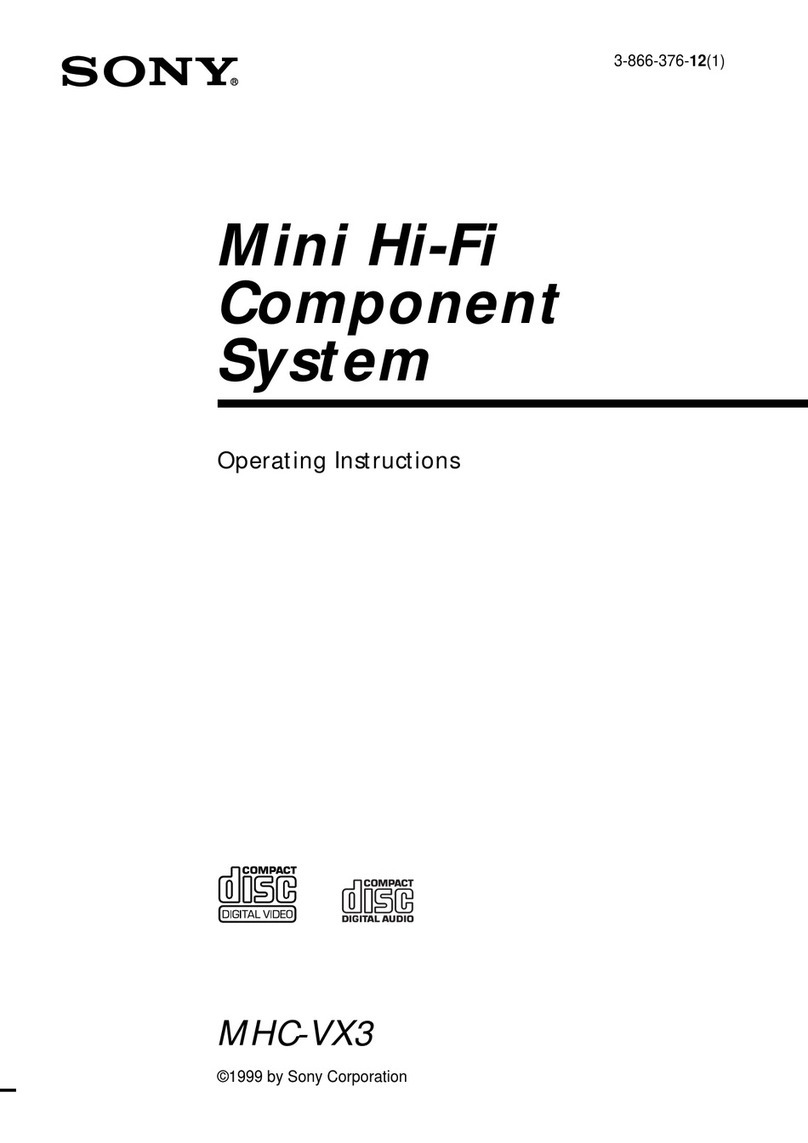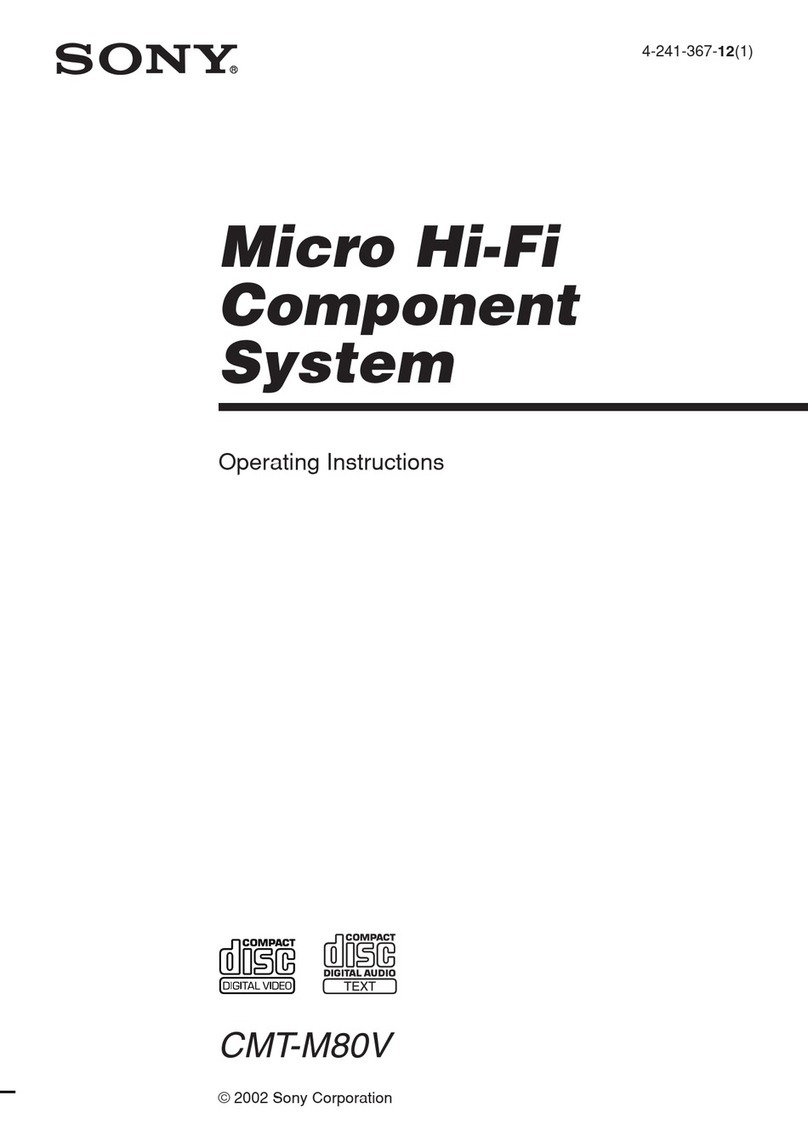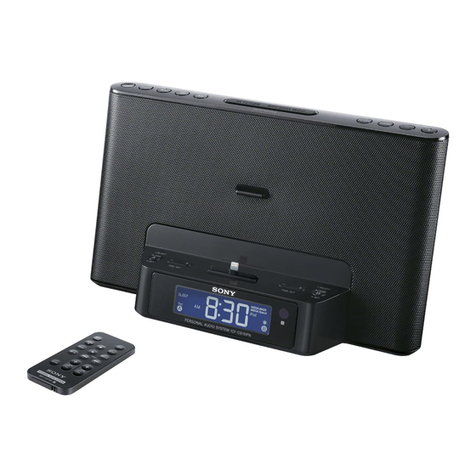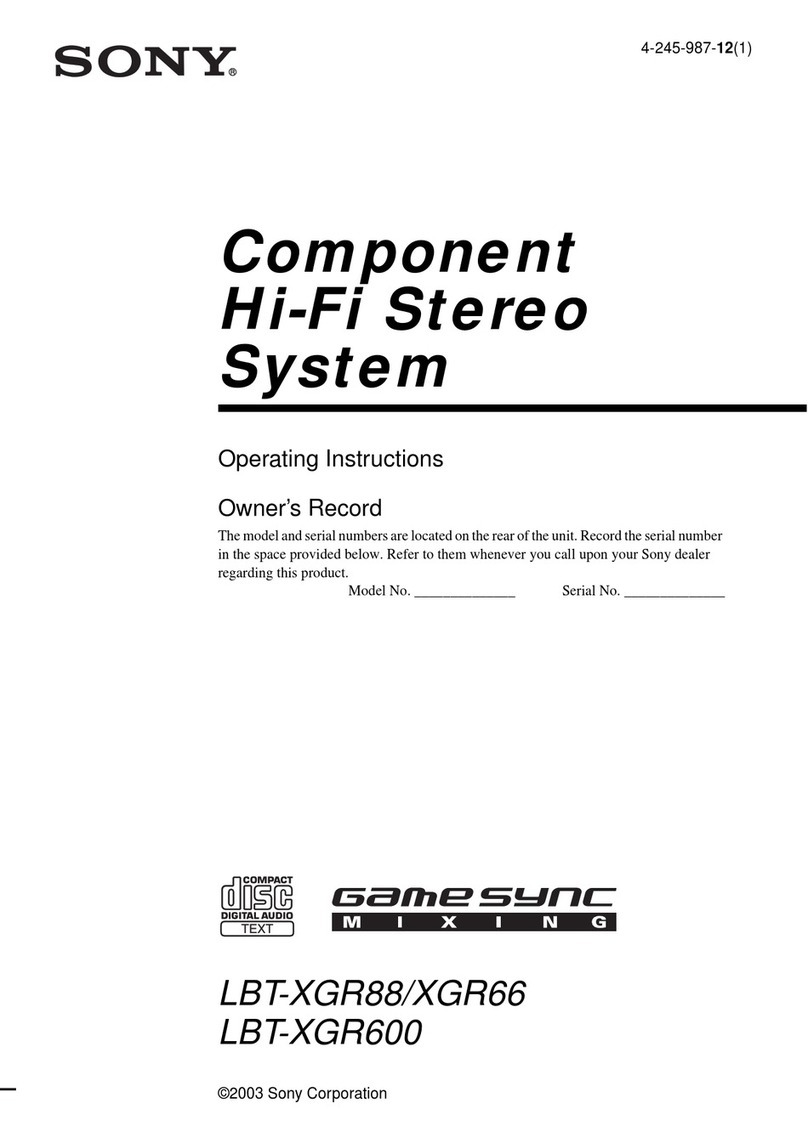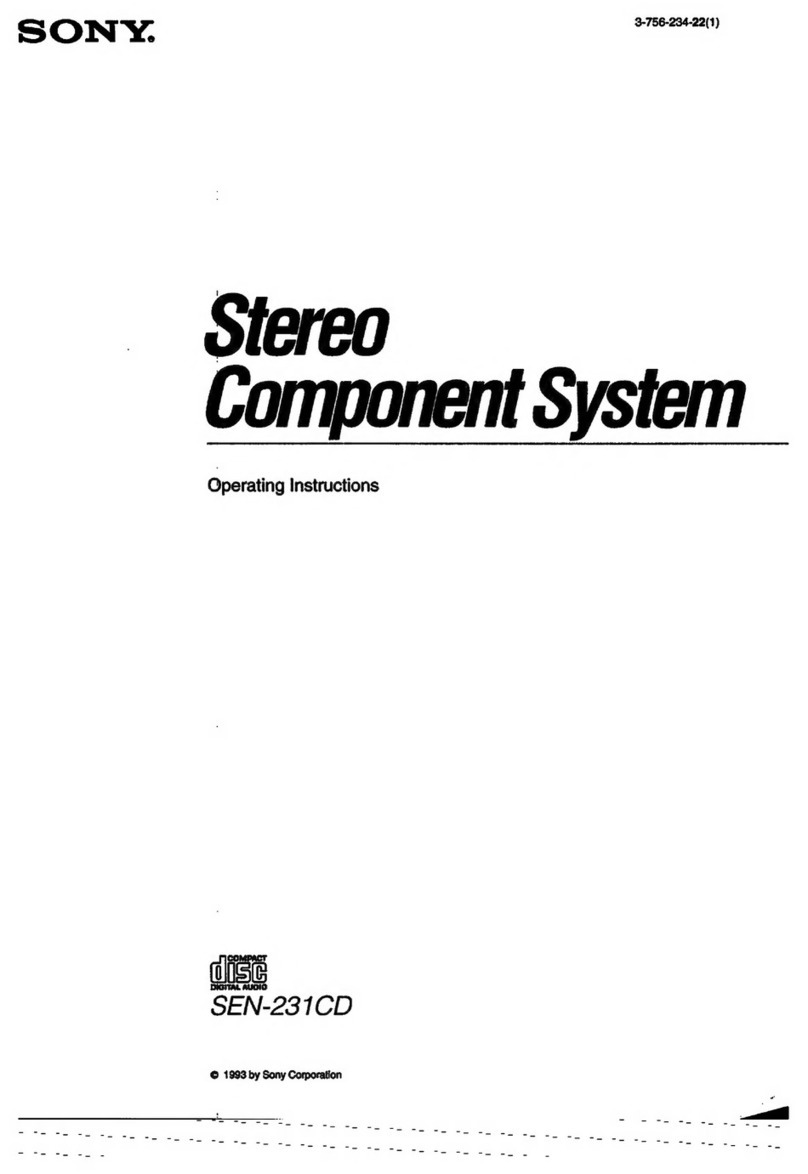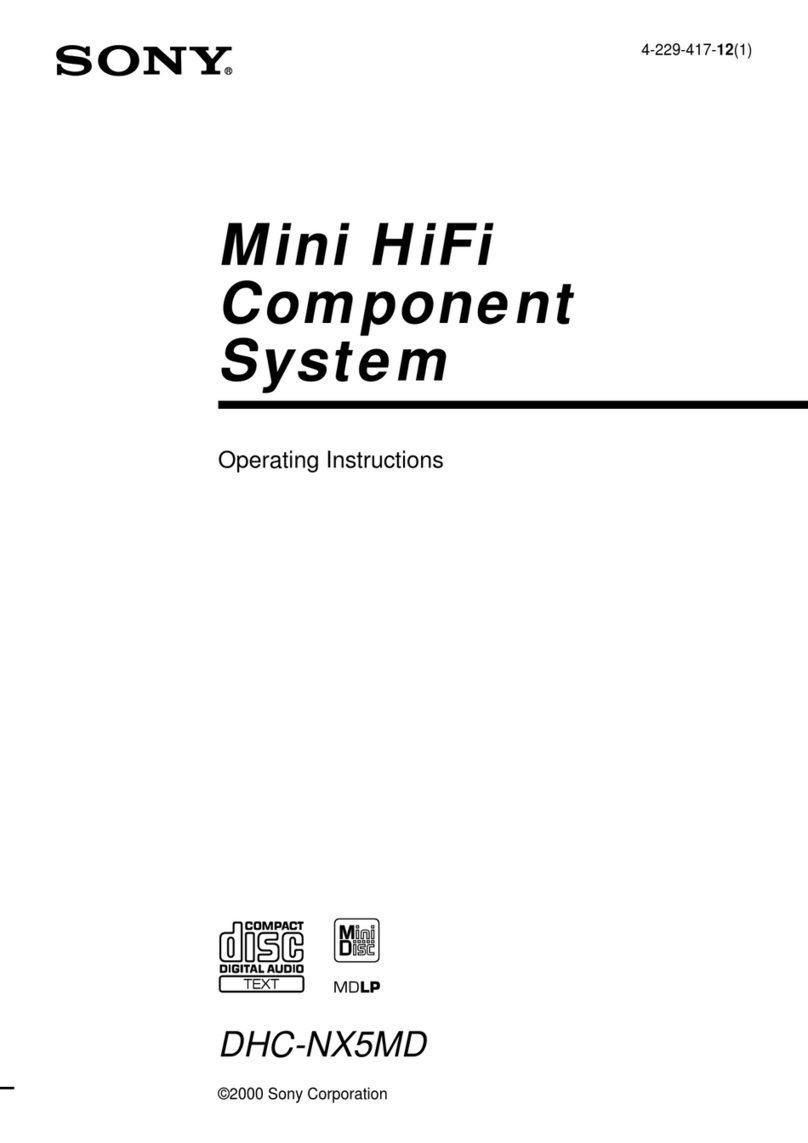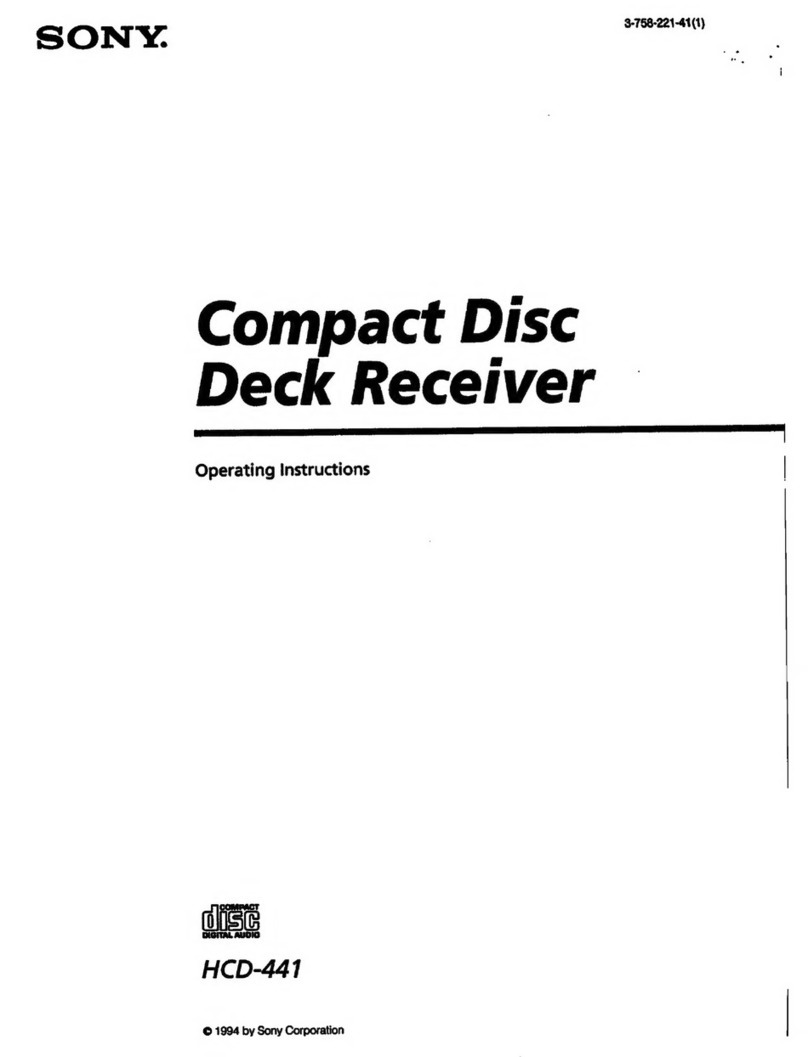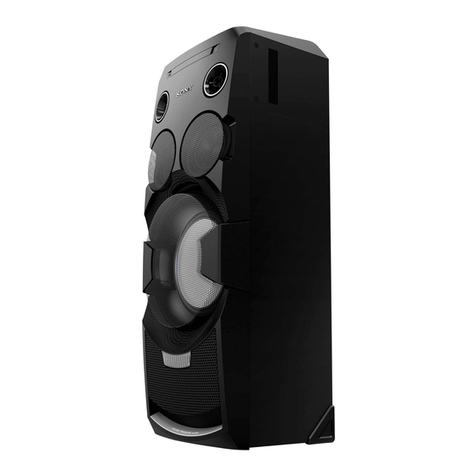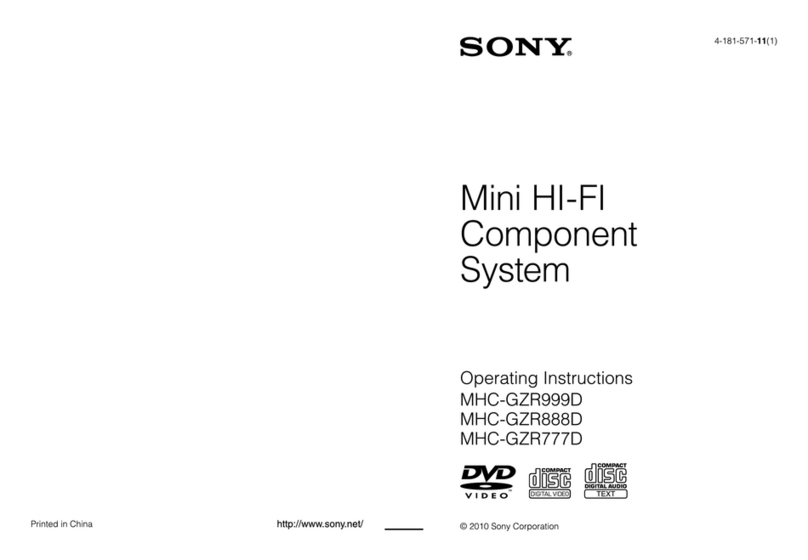
3
HCD-CP505
1. SERVICING NOTES ····················································· 10
2. GENERAL ········································································ 12
3. DISASSEMBLY ······························································ 15
3-1. Top Panel Section ·························································· 16
3-2. Cassette Mechanism Deck ············································ 16
3-3. Front Panel, MD Mechanism Deck Block ···················· 17
3-4. SWITCH Board, JACK Board ······································ 18
3-5. Back Panel Section (Including OPTICAL Board,
OPTICAL RETAINER Board) ····································· 19
3-6. MAIN Board ································································· 19
3-7. POWER Board ······························································ 20
3-8. CONTROL Board, CD Mechanism Deck
(CDM55G-30BBD61B) ················································ 20
3-9. Cam (CDM55) ······························································ 21
3-10.Base Unit (BU-30BBD61B) ········································ 21
3-11.Optical Pick-Up (BU-30B Assy) ································· 22
3-12.MD Mechanism Deck (MDM-7S2C)·························· 22
3-13.DIGITAL Board ·························································· 23
3-14.Holder Section ····························································· 23
3-15.BD (MD) Board ·························································· 24
3-16.Loading Motor Assembly (M103),
Spindle Motor Assembly (M101),
Sled Motor Assembly (M102) ····································· 24
3-17.Over Wright Head (HR901) ········································ 25
3-18.Mini Disc Device (KMS-262E) ·································· 25
4. TEST MODE ···································································· 26
5. ELECTRICAL ADJUSTMENTS ······························· 31
6. DIAGRAMS ······································································ 44
6-1. Circuit Boards Location ················································ 45
6-2. Block Diagrams ····························································· 46
MD Section ··································································· 46
CD and Main Section ···················································· 47
TABLE OF CONTENTS
SAFETY-RELATED COMPONENT WARNING!!
COMPONENTS IDENTIFIED BY MARK 0OR DOTTED LINE WITH
MARK 0ON THE SCHEMATIC DIAGRAMS AND IN THE PARTS
LIST ARE CRITICAL TO SAFE OPERATION. REPLACE THESE
COMPONENTS WITH SONY PARTS WHOSE PART NUMBERS
APPEAR AS SHOWN IN THIS MANUAL OR IN SUPPLEMENTS
PUBLISHED BY SONY.
6-3. Printed Wiring Board – BD (CD) Board – ··················· 48
6-4. Schematic Diagram – BD (CD) Board – ···················· 49
6-5. Printed Wiring Board – BD (MD) Board – ················ 50
6-6. Schematic Diagram – BD (MD) Board (1/2) – ············ 51
6-7. Schematic Diagram – BD (MD) Board (2/2) – ············ 52
6-8. Printed Wiring Board – MAIN Board – ······················· 53
6-9. Schematic Diagram – MAIN Board (1/2) – ················· 54
6-10.Schematic Diagram – MAIN Board (2/2) – ··············· 55
6-11.Printed Wiring Board – DIGITAL Board – ················ 56
6-12.Schematic Diagram – DIGITAL Board – ··················· 57
6-13.Printed Wiring Board – TC Board – ··························· 58
6-14.Schematic Diagram – TC Board – ····························· 59
6-15.Printed Wiring Board – Control Section (Side A) – ··· 60
6-16.Printed Wiring Boards – Control Section (Side B) – · 61
6-17.Schematic Diagram – Control Section (1/2) – ··········· 62
6-18.Schematic Diagram – Control Section (2/2) – ··········· 63
6-19.Printed Wiring Boards – Switch Section – ················· 64
6-20.Schematic Diagram – Switch Section – ····················· 65
6-21.Printed Wiring Board – POWER Board – ·················· 66
6-22.Schematic Diagram – POWER Board –····················· 67
6-23.Printed Wiring Board – OPTICAL Board – ··············· 68
6-24.Schematic Diagram – OPTICAL Board – ·················· 69
6-25.IC Block Diagrams ······················································ 70
6-26.IC Pin Function Description ········································ 78
7. EXPLODED VIEWS
7-1. Overall Section ······························································ 83
7-2. Front Panel Section ······················································· 84
7-3. Back Panel Section ························································ 85
7-4. MD Mechanism Deck Section-1 (MDM-7S2C) ··········· 86
7-5. MD Mechanism Deck Section-2 (MDM-7S2C) ··········· 87
7-6. CD Mechanism Deck Section-1
(CDM55G-30BBD61B) ················································ 88
7-7. CD Mechanism Deck Section-2 (BU-30BBD61B) ······ 89
8. ELECTRICAL PARTS LIST ······································· 90
: LEAD FREE MARK
Unleaded solder has the following characteristics.
•Unleaded solder melts at a temperature about 40°C higher than
ordinary solder.
Ordinary soldering irons can be used but the iron tip has to be
applied to the solder joint for a slightly longer time.
Soldering irons using a temperature regulator should be set to
about 350°C.
Caution: The printed pattern (copper foil) may peel away if the
heated tip is applied for too long, so be careful!
•Strong viscosity
Unleaded solder is more viscous (sticky, less prone to flow) than
ordinary solder so use caution not to let solder bridges occur such
as on IC pins, etc.
•Usable with ordinary solder
It is best to use only unleaded solder but unleaded solder may
also be added to ordinary solder.



